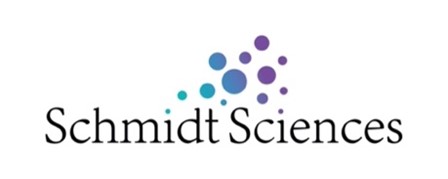Past, Present and Future Global Methane Budget
Methane is a powerful greenhouse gas and has been an important contributor to recent global warming. Important uncertainties remain in understanding today’s global methane budget. One of these uncertainties is the question of how fossil emissions of methane are partitioned between human-caused emissions and natural “geologic” seepage. Isotopic studies of methane in the atmosphere cannot distinguish between natural and anthropogenic fossil emissions, because from the perspective of isotopes the methane looks the same. To help with answering this question, our group has been measuring carbon-14 of methane in ancient air extracted from glacial ice. Carbon-14 is excellent at "fingerprinting" fossil methane, because carbon in this methane is so old that all 14C has decayed away. By making these measurements in ancient (preindustrial) air, we can single out the natural component of fossil methane emissions. We are also working on a project that directly measures natural geologic seepage of methane today, to further improve our understanding of such methane emissions.

There is also concern that with continued global warming, some natural sources of methane from old carbon reservoirs may become more active, increasing the atmospheric methane concentration and providing a further positive feedback to the warming. One of these possible natural sources is methane hydrates, which are widely distributed in ocean sediments. The second possible natural source is thawing permafrost. Our recent project at Taylor Glacier, Antarctica aimed to answer the question of how likely it is that these sources would contribute large amounts of methane to our atmosphere as warming continues. To do this, we studied ancient air from the last time that the Earth experienced a large global warming: the last deglaciation, which occurred approximately between 18 and 8 thousand years ago. CH4 from both hydrates and permafrost would be expected to contain old carbon with no or relatively little 14C as compared to other methane sources. Our results show that old carbon reservoirs were not important in increasing atmospheric methane during the global warming of the last deglaciation. A new project called FETCH4 (Fate, Emissions and Transport of CH4) is a large international collaboration that Vasilii Petrenko co-leads and that aims to further improve understanding of methane sources and sinks with a combination of new atmospheric measurements, atmospheric models and machine learning.

![]()

These projects have been or are being supported by NSF Awards PLR-1245659, ARC-1203779, AGS-2039234, by Schmidt Sciences and by the Packard Foundation.
Related Publications
Kazemi, R. Schlageter, W., Hmiel, B., Weber, T.S., Murray, L.T., Petrenko, V.V. 2021. Investigating methane emissions from geologic microseepage in Western New York State, United States. Elementa, 9: 1. https://online.ucpress.edu/elementa/article/9/1/00066/117169/Investigating-methane-emissions-from-geologic.
Dyonisius, M.N., V.V Petrenko, A.M. Smith, Q. Hua, B. Yang, J. Schmitt, J. Beck, B. Seth, M. Bock, B. Hmiel, I. Vimont, J.A. Menking, S.A. Shackleton, D. Baggenstos, T.K. Bauska, R.H. Rhodes, P. Sperlich, R. Beaudette, C. Harth, M. Kalk, E.J. Brook, H. Fischer, J.P. Severinghaus, R.F. Weiss. 2020. Old carbon reservoirs were not important in the deglacial methane budget. Science, 367, 907 – 910. https://science.sciencemag.org/content/367/6480/907
B. Hmiel, V.V Petrenko, M.N. Dyonisius, C. Buizert, A.M. Smith, P.F. Place, C. Harth, R.
Beaudette, Q. Hua, B. Yang, I. Vimont, S.E. Michel, J.P. Severinghaus, D. Etheridge, T.
Bromley, J. Schmitt, X. Faïn, R.F. Weiss, E.J. Dlugokencky, Preindustrial 14CH4 indicates greater
anthropogenic fossil CH4 emissions, Nature. 2020 https://doi.org/10.1038/s41586-020-1991-8
Petrenko, V.V., A.M. Smith, H. Schaefer, K. Riedel, E.J. Brook, D. Baggenstos, C. Harth, Q. Hua, C. Buizert, A. Schilt, X. Fain, L. Mitchell, T. Bauska, A. Orsi, R.F. Weiss, J.P. Severinghaus. 2017. Minimal geological methane emissions during the Younger Dryas – Preboreal abrupt warming event. Nature. 548, 443 – 446. https://www.nature.com/article
Petrenko, V.V., A.M. Smith, E.J. Brook, D. Lowe, K. Riedel, G. Brailsford, Q. Hua, H. Schaefer, N. Reeh, R.F. Weiss, D. Etheridge, J.P. Severinghaus, 2009. 14CH4 Measurements in Greenland Ice: Investigating Last Glacial Termination CH4 Sources. Science 324, 506-508. http://www.sciencemag.org/content/324/5926/506
Schaefer, H., M.J. Whiticar, E.J. Brook, V.V. Petrenko, D.F. Ferretti, and J.P. Severinghaus. 2006. Ice record of delta C-13 for atmospheric CH4 across the Younger Dryas-Preboreal transition. Science, 313 (5790), 1109-1112.http://www.sciencemag.org/content/313/5790/1109
